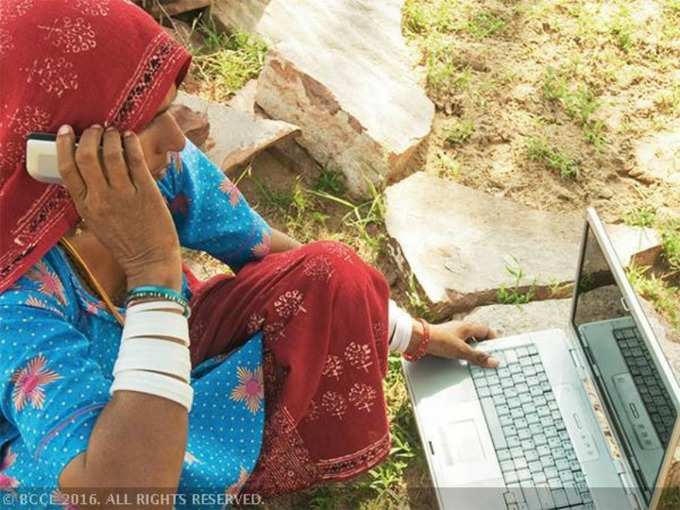 When the government launched the Digital India mandate, its dual goals were to create a digitally empowered society, where citizens have access to information at their fingertips, and to transform India into a knowledge economy. With over a billion mobile phone subscribers leapfrogging brick-and-mortar access points to use the mobile as a gateway for basic e-governance related information, infotainment, online shopping, consumption devices have gone from luxury to utility. While this creates a concrete base for knowledge economy, by familiarizing citizens with
When the government launched the Digital India mandate, its dual goals were to create a digitally empowered society, where citizens have access to information at their fingertips, and to transform India into a knowledge economy. With over a billion mobile phone subscribers leapfrogging brick-and-mortar access points to use the mobile as a gateway for basic e-governance related information, infotainment, online shopping, consumption devices have gone from luxury to utility. While this creates a concrete base for knowledge economy, by familiarizing citizens with As an initial step to making local technology more competitive and relevant, the
Till date, the government has done a commendable job of taking its services to citizens through the mobile, but is that enough to equip citizens with the relevant skills to contribute to India’s knowledge economy? The UN Millennium Development Goals Indicators state that industrialized economies enjoy 63 times more access to personal computers (PCs) than developing countries. For most developed nations, the growth story has been an ‘and’ story, wherein they’ve had high levels of penetration of both PCs and mobile phones. Digital India’s story too will have to be an ‘and’ story, where consumption devices serve as a gateway to technology and PCs, owing to their larger screen size, physical keyboards and productive capabilities, are leveraged as a cornerstone for productivity and development.
An analysis done by Kantar IMRB and the Indian School of Business shows that 54% citizens in non-urban India prefer a PC over a smartphone for education, while increased job opportunities remains one of the key reasons for non-owners of PCs to consider purchasing one.
Additionally, owners of both smartphones and PCs are 7% more likely to use the latter to access healthcare, education, and career-related information. As current technology penetration in the country stagnates at a meagre 20% , the government must accelerate the process of making productive technology relevant here. The most critical step to foster a knowledge based economy is platform agnosticism, which entails the use of complementary devices, including mobiles and PCs, to plug gaps in development of skill, digital literacy, and content creation.
Besides the device itself, several factors will play a crucial role in making this happen. The thrust to digitization with the extension of the Optical Fibre Communication (OFC) network, and improved access to development e-services under the BharatNet and Digigaon initiatives outlined in the Budget, will give a fillip to the Digital Villages that we have long envisioned. Offering free WiFi access and high-speed broadband connectivity will lay the foundations for the adoption of productive devices.
Although local brands such as iBall are making computing affordable for consumers, price continues to remain a key deterrent to adoption.
To address this constraint, policy intervention is crucial to subsidize the costs of domestic PC manufacturing by extending customs duty benefits and capital investments to a build a holistic, robust electronic manufacturing and design sector. This will have a positive effect in the long term: it will not only trigger innovations in design customized to local needs, but it will sharpen the prongs of the government’s development trident: Make in India,
Classic gestalt theory follows that the whole is greater than the sum of its parts; this could not be truer for Digital India today. Projected to be the most populated country in the world by 2022 , and already possessing the largest demographic dividend, India presents great opportunities in terms of economic development.
However, to become a leader of R&D and IP demands the skills and knowledge to be differentiated in the global market. We must aim to become a nation with knowledge as a backbone, for which the government must adopt and implement technology policies that enable citizens with the tools to move beyond content consumption, and toward content creation. And while the government will play the key role in setting policies, industry must collaborate to execute that vision, and local technology evangelists will help address citizens’ initial inhibitions and fears associated with the use of what are perceived as being complex devices.
(This article is authored by Debjani Ghosh, Managing Director, and Vice President, Sales & Marketing Group,